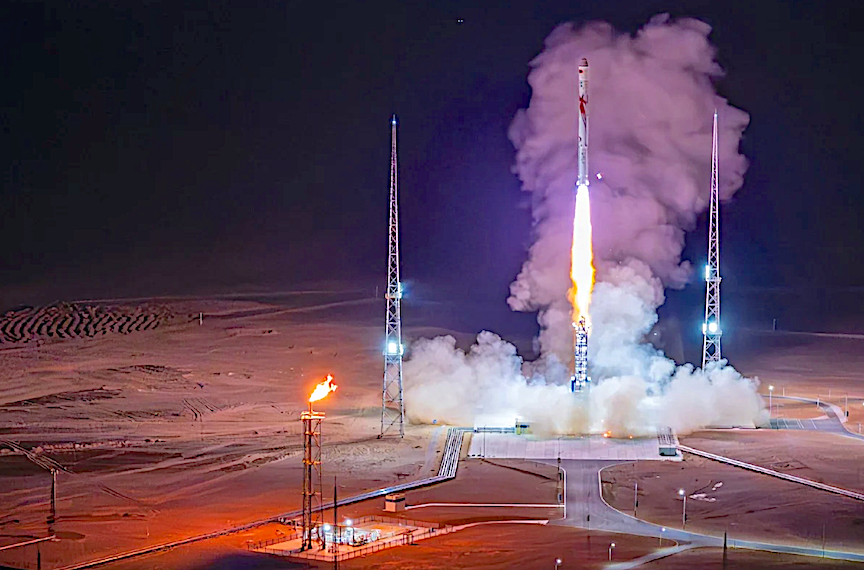
The Zhuque 2 Y-3, developed by Beijing-based private aerospace company LandSpace, took off from the Jiuquan Satellite Launch Center in northwestern China at 7:39 a.m., state news agency Xinhua reports. The rocket sent three satellites – Honghu, Honghu 2, and TY-33 – into their planned orbit, the report said.
LandSpace said the launch “marked the beginning of a new phase of commercialization of liquid-propelled rocket launch in China” and proved the reliability and stability of the technology.
“We will continuously create highly reliable, cost-effective and high-performance commercial launch vehicles,” the company said.
“The key to achieving true industrialization and commercialization of liquid rockets is to realize low-cost, large-scale production and delivery of rockets and to ensure continuous and stable successful launch.”
The crew of the Chinese spacecraft Shenzhou 16 returns to Earth after 5 months in orbit
The company said that the Honghu and TY-33 satellites, developed by Chinese startup Spacety, and Honghu 2, created by Hongqing Technology, were launched into a 460 km (285 miles) sun-synchronous orbit. They did not specify the weight or size of each satellite. However, it was said that the rocket’s power was equivalent to the ability to put up to 1.5 tons into a 500-kilometer solar-synchronous orbit. With the improvements, it is expected to increase its payload capacity to 4 tons in this orbit, meeting the needs of spacecraft and satellites in Earth orbit, the company reports. The rocket was 49.5 meters (162 feet) long, 3.35 meters in diameter, and had a launch weight of 220 tons, excluding the payload.
The Chinese news outlet Caixin reported that LandSpace plans to launch three more and double the number annually to reach 12 launches in 2026.
China is ahead of SpaceX with the world’s first launch of a methane-powered rocket. China aims to become the world’s leading space power by 2045 and to use innovations in space to stimulate the country’s overall development. Inspired by Elon Musk’s SpaceX, a company founded in 2002 to cut launch costs and make spaceflight more affordable, private tech startups like LandSpace have begun to grow in China and are working to catch up.
LandSpace first tried to launch a methane-oxygen rocket in December 2022, but the attempt was unsuccessful. In July, it tried again and succeeded, becoming the first in the world to do so and opening a new era for methane in commercial launches. Methane burns cleaner than carbon-based fuels, which extends the life of the engine and makes it more suitable for reusable rockets. According to the US space agency NASA, methane is also more stable and dense than liquid hydrogen, the most common rocket fuel, which allows it to be stored at “more manageable temperatures” and allows for smaller tanks.
Two other American-made liquid methane oxygen rockets, the SpaceX Starship and the Terran 1 by the American aerospace firm Relativity Space, failed in their attempts to enter orbit earlier this year.

